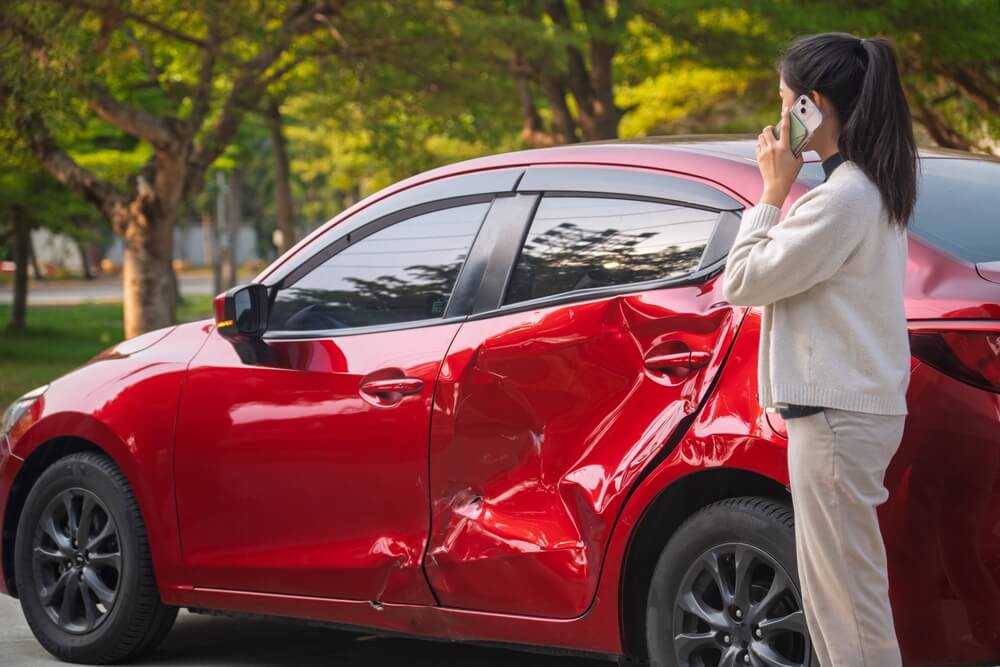
If you are not redirected within 30 seconds, please click here to continue.
Samedi: 10h – 16h HAE

If you are not redirected within 30 seconds, please click here to continue.
If you are not redirected within 30 seconds, please click here to continue.
What Automotive Safety Technologies Should You Have in Your Vehicle in 2021?

- 52% of Canadian drivers rarely or never rely on the driver-assist features in their vehicles, and 42% mentioned they were distracted by the warnings.
- Forward-collision warning, lane departure warning, and advanced emergency braking are associated with a 5% reduction in the frequency of collision claims, an 11% reduction in the frequency of property damage claims, and a 16% reduction in the frequency of bodily injury claims.
- Driver assistance technologies still require the full attention of the driver.
Driver assistance technology is becoming more prevalent in vehicles, and for a good reason. Systems such as rear-view cameras, lane departure mitigation, and vehicle proximity alerts are designed to improve safety and reduce collisions. Moreover, driving a vehicle with driver assistance technologies can net you a modest discount from your car insurance provider.
However, according to a recent survey of drivers in Quebec conducted by Léger on behalf of Allstate Canada, many drivers don’t understand these features or find them distracting, and they disable them.
Only 35% of survey respondents from Quebec said they understand all the features available in their cars, while 52% of Canadians rarely or never rely on the driver-assist features. Furthermore, 42% mentioned they were distracted by the warnings, and 56% admitted they disabled at least one of them. The two main reasons respondents are disabling their driver-assist features are that they are annoying (63%) and don’t trust them (14%).
Unfortunately, that means people are missing the full benefits of the technologies, as Allstate Canada says that vehicles equipped with more driver assistance technologies tend to have a lower frequency of claims than vehicles equipped only with a rear-view camera.
Don't waste time calling around for auto insurance
Use RATESDOTCA to shop around, and compare multiple quotes at the same time.
What are the best automotive safety technologies?
Let’s say you’re looking to upgrade your wheels and intend to buy a new vehicle equipped with all the safety features modern technology can provide. You might wonder what to keep an out for and which automotive technologies are among the best available today. Here’s a handy list of the types of driver assistance technologies most modern cars and trucks have and the safety features they offer:
- Advanced driver assistance systems. Advanced driver assistance systems typically include several safety features. These may include adaptive cruise control, lane departure warning, and lane-keep assist (to keep your vehicle in a lane). There's also blind-spot alert, reverse braking assistance, and cross-traffic alert (helpful in backing out of a parking space to let you know of any oncoming traffic).
- Automatic emergency braking. This feature activates your brakes to help avoid a collision if the vehicle senses one is imminent.
- 360-degree camera. Provides a complete view around your vehicle when parking to help avoid bumping into any objects in your path, such as another vehicle or a bicycle. It’s handy if you drive a large vehicle like an SUV.
- Rear-view camera mirror. This specialized rear-view mirror uses the rear-view camera on your vehicle to give you a view of what’s behind you while reversing.
- Blind-spot view monitor. When turning or changing lanes, this feature provides the driver with a view of what’s on either side of your vehicle.
- Passenger exit warning. This alert uses sensors to detect any oncoming cars or cyclists approaching from behind and automatically locks the doors to prevent you from accidentally opening a door into the path of the approaching object.
- Stolen vehicle tracker. Vehicle theft in Toronto has been on the climb since 2016. Having stolen vehicle tracking technology can help the cops locate your vehicle if it’s been nicked, meaning it provides a greater chance of your vehicle being recovered.
- Wireless smartphone connectivity. You can dispense with plugging your mobile phone into a USB port by connecting it wirelessly to your vehicle using Bluetooth technology. Some versions include a wireless charging pad where you can rest your phone as it powers up.
- Teen driver monitoring. Your kids won’t like it, but you will. Certain Chevrolet, GMC, Buick or Cadillac cars, trucks, and SUVs are equipped with a bundle of measures designed to keep your young adult safe while driving and gives you insight into how they drive. For instance, this system will notify you if your vehicle is travelling above a certain speed, allows you to disable the vehicle’s audio system if seatbelts aren’t being worn, and provides you with a ‘report card’ if safety functions like the forward-collision alert are activated.
According to the Highway Loss Data Institute, a combination of forward-collision warning, lane departure warning, and advanced emergency braking are associated with a 5% reduction in the frequency of collision claims, an 11% reduction in the frequency of property damage claims, and a 16% reduction in the frequency of bodily injury claims.
Driver assistance technology best practices
Meanwhile, Allstate Canada recommends the following best practices for drivers who have vehicles equipped with an array of driver assistance technologies:
- Get familiar with features specific to your vehicle before using them.
- Driver assistance technologies still require the full attention of the driver. Some features may only work in specific conditions, for example, within a certain range of speeds.
- Do not hesitate to ask your car dealer any questions about the technology found in your vehicle, so you can better understand its purposes and how to use its features properly. You can also find information in the vehicle’s owner’s manual or the electronic owner’s manual built into some vehicles’ infotainment systems.
- Technologies like rear-view cameras help, but always make sure to have a good look around the vehicle since the camera may not provide a complete picture.
- Program your navigation system or set up your infotainment system before starting your journey (never do it while driving and avoid being a distracted driver). Stop in a safe place on the side of the road if you must use a device or change the playlist.
Since driver assistance technologies are designed to mitigate the chances of getting into a collision and filing a claim, many car insurance providers will give their policyholders a discount for having them. However, because of the complex computer systems and sensors that are involved, these vehicles can also be expensive to repair, and increasing claims costs are a factor that contributes to premium increases.
Nevertheless, safety is the goal here, and if preventing a collision and upping your protection while on the road is a primary concern, all these technologies can help.
– with files from Thompson’s World Insurance News.
Get money-saving tips in your inbox.
Stay on top of personal finance tips from our money experts!









